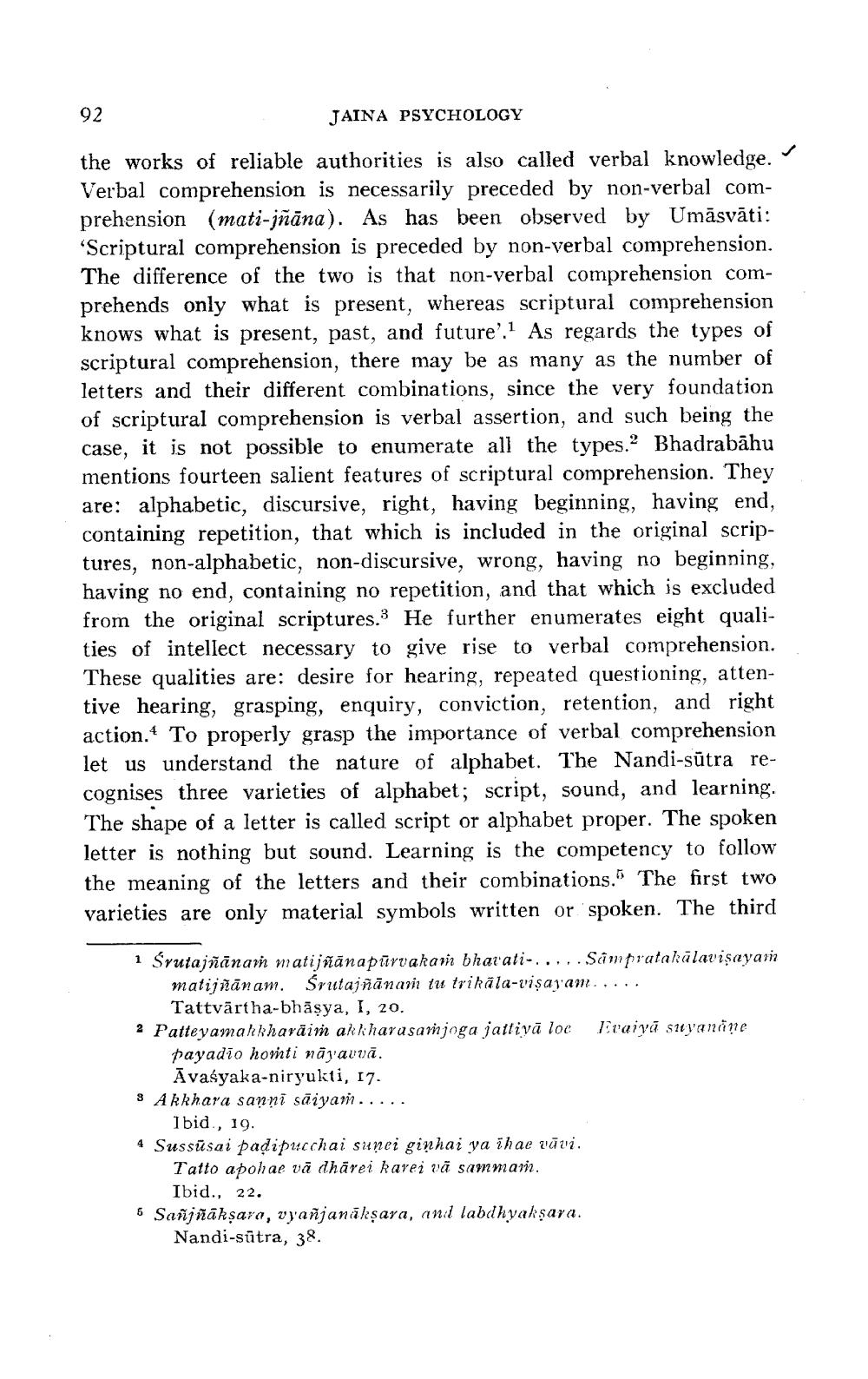________________
92
JAINA PSYCHOLOGY
the works of reliable authorities is also called verbal knowledge. Verbal comprehension is necessarily preceded by non-verbal comprehension (mati-jñāna). As has been observed by Umāsvāti: 'Scriptural comprehension is preceded by non-verbal comprehension. The difference of the two is that non-verbal comprehension comprehends only what is present, whereas scriptural comprehension knows what is present, past, and future'.1 As regards the types of scriptural comprehension, there may be as many as the number of letters and their different combinations, since the very foundation of scriptural comprehension is verbal assertion, and such being the case, it is not possible to enumerate all the types.2 Bhadrabāhu mentions fourteen salient features of scriptural comprehension. They are: alphabetic, discursive, right, having beginning, having end, containing repetition, that which is included in the original scriptures, non-alphabetic, non-discursive, wrong, having no beginning, having no end, containing no repetition, and that which is excluded from the original scriptures.3 He further enumerates eight qualities of intellect necessary to give rise to verbal comprehension. These qualities are: desire for hearing, repeated questioning, attentive hearing, grasping, enquiry, conviction, retention, and right action. To properly grasp the importance of verbal comprehension let us understand the nature of alphabet. The Nandi-sūtra recognises three varieties of alphabet; script, sound, and learning. The shape of a letter is called script or alphabet proper. The spoken letter is nothing but sound. Learning is the competency to follow the meaning of the letters and their combinations. The first two varieties are only material symbols written or spoken. The third
1 Śrutajñānam matijñānapūrvakam bharati-..... Sampratakālavisayar
matijñānam. Srutajñānam tu trikäla-vişajam.....
Tattvārtha-bhāsya, I, 20. 2 Patte yamahkharäim ak kharasamjoga jattivă loc raiva sit vanane
payadio honti nāvavvā.
Āvaśyaka-niryukti, 17. 3 Akkhara sanni sõiyam .....
Ibid., 19. 4 Sussüsai padipucchai sunei ginhai ya ihae vāvi.
Tatto apohae vă dhārei karei vā summam.
Ibid., 22. 6 Sanjñākṣaya, vyañjanākşara, ani labdhyaksara.
Nandi-sūtra, 38.




